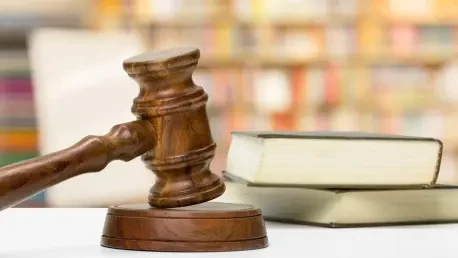Imagine a scenario where the guardians of government accountability, tasked with uncovering waste and abuse, are abruptly dismissed without proper notice or explanation, sparking a heated debate over executive power. This situation unfolded when former President Donald Trump fired 17 agency inspectors general (IGs) just days into his second term, igniting fierce discussions on oversight independence. This roundup article dives into diverse opinions and insights from legal experts, policy analysts, and government stakeholders to unpack the recent federal court ruling that acknowledged a clear legal violation by Trump but denied reinstatement for the fired watchdogs. The purpose is to explore varying perspectives on this pivotal case and its implications for the balance of power in federal governance.
Unpacking the Controversy: Trump’s Dismissal of Oversight Officials
The dismissal of 17 inspectors general has sparked intense scrutiny over the boundaries of presidential authority. Legal scholars argue that this mass firing, executed without the mandated 30-day congressional notice or detailed justification, represents a direct challenge to statutory protections designed to shield oversight roles from political interference. Many see this as a critical test of whether executive power can override legislative safeguards, raising alarms about the erosion of accountability mechanisms within government agencies.
Policy analysts from various think tanks highlight the political firestorm that followed the firings, noting that the swift action fueled accusations of retaliation against officials who might have been investigating sensitive matters. Some observers suggest that this incident underscores a broader pattern of tension between the executive branch and independent watchdogs, a dynamic that could shape future administrations’ approach to oversight. The court’s ruling, while confirming the legal breach, has left many questioning if symbolic acknowledgment is enough to deter similar actions.
This roundup aims to dissect not just the legal nuances but also the ideological divides surrounding the case. By gathering insights from multiple sources, the discussion reveals a spectrum of thought on how this precedent might influence the relationship between the White House and federal oversight bodies. The focus remains on understanding whether current laws are robust enough to protect IGs or if deeper reforms are necessary.
Legal Insights: Analyzing the Court’s Decision on Fired IGs
Violation Confirmed: Trump’s Breach of Federal Law
Legal experts widely agree that the court’s finding of a statutory violation in Trump’s dismissal process is a significant acknowledgment of the rule of law. The failure to adhere to the required notice period and provide Congress with a rationale for the firings was deemed a clear breach by the presiding judge. Many in the legal community view this ruling as a necessary step to affirm that no branch of government operates above established procedures, even if the practical outcomes remain limited.
Commentators from judicial watch groups emphasize the symbolic weight of this decision, suggesting it serves as a reminder to future administrations that procedural rules cannot be ignored without consequence. However, some argue that the lack of immediate penalties or remedies for the violation dilutes its impact. They contend that without stronger enforcement mechanisms, such rulings risk becoming mere formalities rather than deterrents to executive overreach.
A recurring theme among legal analysts is the need for Congress to revisit and strengthen the statutes governing IG removals. Several propose that clearer penalties or mandatory oversight triggers could prevent similar lapses. This perspective reflects a concern that while the violation was recognized, the absence of tangible repercussions might embolden future leaders to test the boundaries of their authority.
Reinstatement Denied: Why the Court Held Back
Despite confirming the legal breach, the court declined to reinstate the fired IGs, a decision that has drawn mixed reactions. Legal scholars point out that the judge’s rationale hinged on the absence of irreparable harm, noting that the president could legally remove the officials again after complying with proper notice requirements. Many see this as a pragmatic approach, reflecting the judiciary’s reluctance to overstep into executive functions when the harm is deemed temporary or reversible.
Government policy experts, however, express concern over the precedent this sets for IG protections. Some argue that allowing such dismissals to stand, even with a noted violation, could undermine the independence of oversight roles by signaling that procedural missteps carry minimal risk. They fear this might reduce the statutory safeguards to mere formalities, leaving watchdogs vulnerable to political pressures.
A contrasting view from constitutional law commentators suggests that the court’s restraint respects the separation of powers. They argue that mandating reinstatement could infringe on legitimate executive authority to shape agency leadership, provided legal processes are eventually followed. This perspective highlights a delicate balance, where judicial intervention must be weighed against the president’s constitutional prerogatives, leaving room for ongoing debate about the scope of such authority.
Emerging Legal Trends: Oversight Independence at Stake
The case ties into broader legal battles over presidential removal powers, with many pointing to a pending Supreme Court case involving a Federal Trade Commission member as a potential game-changer. Legal analysts note that the outcome of this case, expected to unfold over the next year or two from 2025, could redefine the extent to which statutory protections shield federal officials from executive control. This connection underscores a growing judicial focus on clarifying the limits of presidential authority.
Several court watchers also discuss the presiding judge’s decision to defer rulings on back pay for the fired IGs until after the Supreme Court’s verdict. This move is seen by some as a cautious strategy to avoid conflicting precedents, while others worry it prolongs uncertainty for the affected officials. The delay reflects a broader tension in how courts navigate overlapping legal questions about executive power and oversight autonomy.
A critical perspective from legal reform advocates challenges the adequacy of existing laws to protect IGs in light of evolving judicial interpretations. They argue that recent rulings, including this one, suggest a tilt toward greater presidential dominance, potentially at the expense of independent accountability. This viewpoint calls for legislative action to fortify protections, ensuring that oversight roles remain insulated from political whims.
Divided Opinions: The Role of Federal Watchdogs
Stakeholders across the spectrum hold polarized views on the purpose and independence of inspectors general. White House defenders, as echoed by some policy insiders, portray the fired IGs as partisan actors who overstepped their mandates, justifying their removal as a necessary reassertion of executive control. This narrative frames oversight officials as potential obstacles to administrative agendas, casting doubt on their neutrality.
In stark contrast, judicial and ethics experts commend the IGs for their dedication to uncovering governmental misconduct, arguing that their independence is essential to democratic accountability. Many in this camp lament the firings as a blow to public trust, suggesting that such actions risk portraying oversight as a political tool rather than a safeguard. This perspective emphasizes the need to preserve IG autonomy to maintain credibility in government operations.
A third angle from governance scholars explores how these opposing narratives shape public perception of federal oversight. They suggest that the stark divide—between viewing IGs as rogue bureaucrats versus vital watchdogs—could influence legislative efforts to either weaken or bolster their protections. This ongoing clash of ideas is seen as a driver for potential policy shifts, with implications for how accountability is structured in the years ahead.
Key Takeaways: Lessons From the Court Ruling
Drawing from various analyses, the court’s dual stance is clear: Trump’s actions violated federal law, yet reinstatement was denied due to the lack of irreparable harm. Legal commentators stress that this outcome highlights a gap in enforcement, where acknowledging a breach does not necessarily translate to remedy. Many agree that while the ruling upholds the importance of procedure, it falls short of delivering justice to the affected officials.
Policy advocates offer practical suggestions, such as pushing for stricter statutory language to ensure compliance with removal protocols. Some propose enhanced congressional oversight mechanisms, like mandatory hearings before IG dismissals, to create additional checks on executive power. These ideas reflect a collective push to prevent procedural lapses from becoming normalized in future administrations.
Another insight from government reform groups focuses on public engagement, urging citizens to stay informed about legal rulings that impact accountability. They recommend supporting advocacy for reforms that strengthen IG independence, such as clearer penalties for violations. This takeaway emphasizes the role of public awareness in shaping a governance system where oversight is both valued and protected.
Reflecting on the Balance: Executive Power Versus Oversight
Looking back, the legal battle over the fired inspectors general captured a pivotal moment in the struggle between presidential authority and the need for independent oversight. The court’s acknowledgment of a statutory violation stood as a testament to the importance of adhering to law, yet the denial of reinstatement underscored the practical limits of judicial intervention. Diverse opinions from legal minds, policy experts, and governance advocates painted a complex picture of a system grappling with its own checks and balances.
Moving forward, actionable steps emerged from this discourse, including the need for legislative reforms to tighten removal processes and enhance protections for federal watchdogs. Stakeholders also pointed to the value of public advocacy in ensuring that oversight remains a cornerstone of democratic accountability. As related Supreme Court cases loom on the horizon, the call to monitor and influence these outcomes offers a path for sustained engagement, ensuring that the lessons from this ruling continue to inform efforts to safeguard government integrity.









